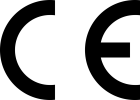- Products
- For Industrial
- For High Purity
- For Lab & Research
- BTU Wobbe CARI Calorimeters
- CEMS Analyzers
- Cavity Ring-Down Spectroscopy Analyzers
- Dew Point Chilled Mirror Analyzers
- Dew Point Moisture Meters
- Excimer Total Sulfur-Nitrogen Lab & Process Analyzers
- 开云app官方网站登录
- Optical Absorption Spectroscopy Analyzers
- Oxygen Analyzers & Safety Monitors
- Relative Humidity Analyzers
- kaiyun开云平台体育官方网站
- kaiyun开云平台
- Applications
- Application Assistance
- Agricultural Production
- Airborne Molecular Contaminants
- Air Separation Units & Nitrogen Plants
- Atmospheric & Air Quality
- Battery Manufacturing
- Benzene Fenceline Monitoring
- Biofuel Analysis
- Carbon Capture
- Chemical Manufacturing
- Energy
- Environmental Monitoring
- Evolved Gas Analysis
- Flare Gas
- Food and Beverage
- Gas Purity Analysis
- 制氢
- Lab & Research
- Petrochemical and Refining
- Pharmaceuticals, Life Science & Biotechnology
- 半导体
- Steelmaking Basic Oxygen Process
- Water Quality Analysis (TOC COD BOD TNb)
- Resources
- Service
- Application Assistance
- Commissioning
- Data Services
- Service Contracts
- Spares & Upgrades
- Training
- RMA for Oxygen Monitors
- Rental CRDS Analyzers
- Remote Connected Service
- Analyzer Performance Verification Program
- Commercial Humidity Calibration Laboratories
- Accredited SCS Calibration Laboratory
- Accredited DAkkS Calibration Laboratory
- About Us
- Events
- Careers
- Contact
BOD Analysis
- Home
- Applications
- BOD Analysis
What is Biochemical Oxygen Demand (BOD)?
There are a few methods approved for determining biological oxygen demand, although one of them is used overwhelmingly by the analytical community. It is known as Standard Methods 5210B. This method analyzes the difference in dissolved oxygen from a sample for five days. A known volume of sample has its initial DO content recorded and after a five-day incubation period at 20°C, the sample is removed from the incubator and the final DO content is taken.Generally, the BOD5 is perceived as the BOD for controlling wastewater treatment plants (WWTP). However, there are nitrification inhibitors added to the BOD5 to suppress the nitrogen degradation. Obviously,thenitrification is an important partof the biological degration of organics and thus is very important for the control of wasteawater treatment plants. Consequently, theBOD5 is poorly suitedfor the control of wastewater treatment plants.
SOURCES OF BOD
Leaves and woody debris; dead plants and animals; animal manure; effluents from pulp and paper mills, wastewater treatment plants, feedlots, and food-processing plants; failing septic systems; and urban storm water runoff.
WHAT IS TOXICITY?
Toxicity is described as thedirect harmful effect of a substance on organisms. These effects can already occur at low concentrations of toxic substances and are dependent on the incubation period and the dosage. Some test methods that are available on the market can detect toxicity, but they do not however identify exactly which toxins are present. By using fish, daphnia, mollusks, algae or luminous bacteria, they simply test whether a water sample has a toxic effect.
The goal of toxicity testing is to develop data that can ensure appropriate protection of public health from the adverse effects of exposures to environmental agents.
NITRIFICATION RESPIRATION INHIBITION TEST
The bacteria (nitrifiers) used live on oxygen from the conversion of ammonia to nitrate. OurNitriTox™andToxAlarm™measures this oxygen consumption. Toxic substances in the sample contents can inhibit the respiration of the bacteria leading to a lowering of the oxygen consumption. Thereby the nitrifiers’ oxygen consumption enables to draw conclusions about the toxicity of a sample. Our analyzer test takes5-15 minutesand is characterized by its self-regenerating, integrated bacteria culture. Hence, no purchase or external breeding is necessary.
THE DIFFERENCE TO COMMON METHODS
The LAR Process Analysers AG’s measurement method uses a bacteria culture which constantly and independently produces biomass in a fermenter. This fermenter is separated from the measuring cell. For each measurement a fresh amout of bacteria is used. This guarantees that there is always enough bacteria for new measurements and the risk of the fermenter being contaminated is removed. For this reason, there is no purchase or external breeding of organisms necessary.
being contaminated is removed. For this reason, there is no purchase or external breeding of organisms necessary.
| Algae | Bioluminescence | Daphnia | Fish Test | Nitrifiers | |
|---|---|---|---|---|---|
| Supply | Purchase / breed | Purchase / breed | Purchase / breed | Purchase / breed | Self-regenerating |
| Duration | 72 h | 50 min | 24 or 48 h | 48 h | 5 min |
| Sensitivity | very high | middling | very high | high | very high |
| Continuous monitoring after accident | yes | yes | no | no | yes |

COMMON TOXICITY MEASUREMENT METHODS
ALGAE
经常使用单细胞绿藻英蒂cate toxicity. This method measures the inhibition of cell division caused by toxic substances. At high toxic concentrations, algae can die. Hence, new algae have to be stored and kept in stock to ensure further toxicity measurements after a toxic effect. The algae test takes72hours,and the supply of thetest organisms must be secured by purchase or breed.
BIOLUMINESCENCE
Bioluminescence is the production and emission of light by a living organism. Specific detectors measure the emitted light and draw conclusions on toxicity. Toxic substances cause a reduction of the emitted light. Commonly, this standard method usesVibrio fischerias test organisms. These bacteria glow under optimal growth conditions (bioluminescence). The bioluminescence is reduced by toxic substances in the sample and may lead to death of the organisms. The bioluminescence test takes50 minutes. The usedtest organisms must be purchased or bred.
DAPHNIA
Daphnia are crustaceans between 0.2 to 5 mm in length. Commonly, these small animals called water fleas and are often used for the determination of toxicity. However, for toxicity measurements, they must not be older than 24 hours. The used Daphnia Magna are very sensitive to heavy metals but less to other substances. Toxic substances cause the death of the organisms, following which the number of surviving organisms are counted. The daphnia test takes24 or 48hours,and theorganisms must be bred.
鱼测试
The fish test – also known as golden orfe test – describes an animal experiment, which aims to determine at what dilution of wastewater all animals survive 48 hours. The result is the smallest integer value of the dilution of the wastewater (GF value). As with the common test methods, the toxic substances cause the death of the organisms. At the end of the test the number of surviving fish are counted. In Germany the fish test has been replaced since 2005 by the fish egg test. The fish test takes48 hours. The usedtest organisms must be purchased or bred.
Questions? We’re here to help.

Terms and Conditions of Sale - Extrel
Sellers-Agreement-Purchasing-Terms-PUR-0026-FR-rev3 - Extrel
Terms and Conditions – Process Insights Swiss AG - MBW
Terms and Conditions – Tiger Optics
Terms and Conditions – Process Insights AG - LAR
Terms and Conditions – Guided Wave
Terms and Conditions of Sale – COSA Xentaur
SITE MAP
Copyright © 2023 Process Insights, Inc. All Rights Reserved.






